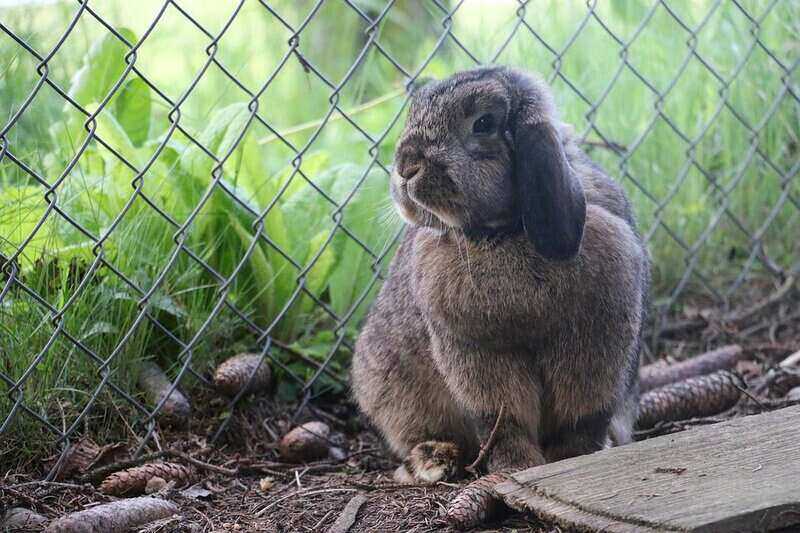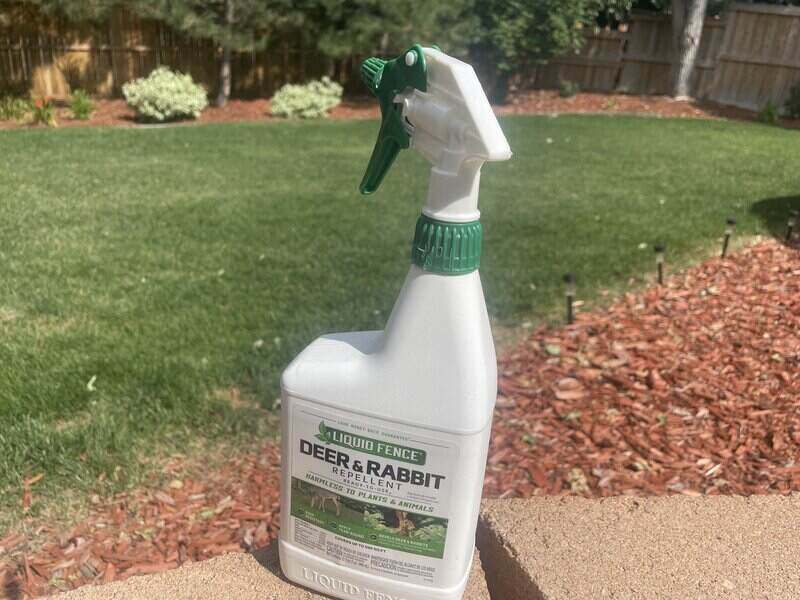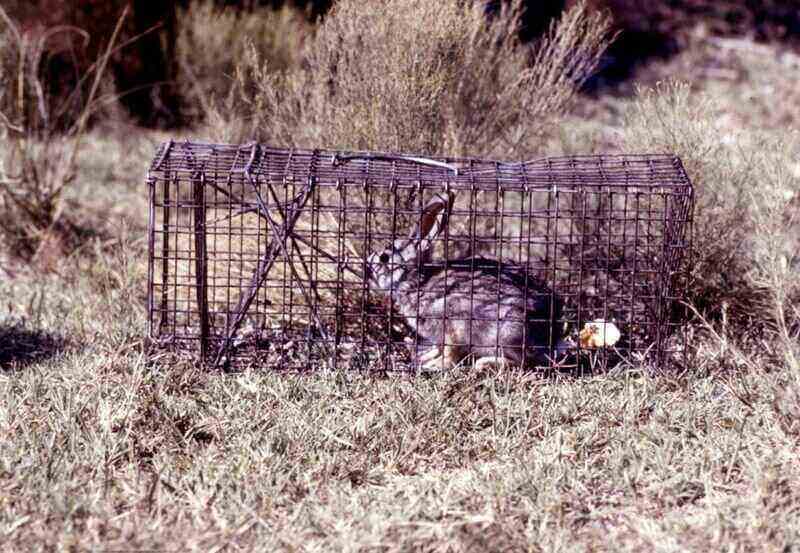How to Keep Rabbits Out of Your Yard
BY ALISON HOOVER | AUGUST 4TH, 2022 | BLOGRabbits can cause a lot of damage to your lawn and garden pretty quickly. There are a lot of ways to keep rabbits out of your yard, including natural deterrents, store-bought remedies, and preventative measures.
In this article, we’ll talk about solving the big problems caused by these small animals.
Table of Contents:
- Natural Methods of Deterring Rabbits
- Store-bought Options
- Eliminate Nesting Areas
- How to Know if Rabbits are the Issue
- The Importance of Keeping Rabbits Out of Your Yard
- FAQ
Natural Methods of Deterring Rabbits
You likely have a lot of products in your home right now that should help keep bunnies away and minimize your rabbit problems.
Red pepper, talcum, and sulfur
Due in part to their strong sense of smell, rabbits will keep away from all three of these substances. Sprinkle any of these on their favorite plants, and they’ll steer clear.
Irish Spring soap
This tried and true method takes just a little prep work and offers non-toxic protection. Take a bar of Irish Spring and shave it using a cheese grater or something similar. Place the shavings into small mesh pouches and place them throughout your flower or vegetable garden.
Onions, garlic, and hot peppers
Rabbits don’t like the pungent smell or taste of these crops. By planting these around tastier veggies, such as carrots and lettuce, you can create a barrier to dissuade bunnies. Asparagus, rhubarb, leeks, and tomatoes are also viable options.
Sweet alyssum, marigolds, and snapdragons
Plant flowers that rabbits naturally dislike. Geraniums, wax begonias, vincas, and salvia also make the list of unappealing plants while adding color and vibrancy to flowerbeds.
It’s important to note that a hungry rabbit will eat what it can find, and not all rabbits have the same tastes. While these options are likely to work, They certainly aren’t a guarantee.
Store-bought Options to Deter Rabbits

If you’re headed to the home supply store, you’ll find lots of options to repel rabbits and protect your lawn and garden.
Fencing
The most effective way to protect your garden and vegetation is by building a fence, and it’s something you can probably DIY in an afternoon. Keep in mind: Rabbits can jump about 2 feet high and squirm through tight spaces. You need to consider this when installing your fence.
Chicken wire or mesh with openings of less than an inch work best. You can also use hardware cloth if you prefer. The fencing needs to be at least 2 feet high and either secured closely to the ground or inset by about 2 inches. This will prevent burrowing critters from sneaking in underneath.
Repellents

Various sprays, powders, and additives are available to keep all garden pests at bay. It’s crucial to read the packaging carefully and follow the directions for how much to apply, where, and when.
Dried blood meal is another option, but you’ll need to reapply it after each rain. Similar to many of the natural ways noted above, rabbits may become accustomed to these remedies. You may want to rotate the products you use.
Traps
A final option is live trapping. This isn’t for everyone, and it may not be viable depending on where you live. However, this humane option may be your best bet.
Place traps near popular food sources. You can also add a carrot, apple, or lettuce inside the trap as bait. Check the traps daily. Release trapped rabbits in safe areas several miles away to prevent them from finding their way back.
Note: Traps don’t discriminate, and you may find yourself with a variety of other animals as well.
Eliminate Nesting Areas
The easiest way to deal with any problem is to prevent it in the first place. You can keep rabbits out of your yard by eliminating areas for them to shelter. This, combined with the other remedies noted above, will be your most effective plan.
Rabbits aren’t picky about where they burrow and nest, as long as it provides warmth, cover, and quick access to food sources.
- Brush piles and wood piles – Remove or rearrange your fireplace wood. You can also stack the woodpile in a single row to provide less space for rabbits to burrow.
- Weedy and overgrown areas- Spaces with natural vegetation are ideal for foraging rabbits. You should periodically mow down the overgrowth, which will eliminate the cover rabbits look for. You could also consider grass alternatives.
- Organic matter beneath pine trees – Leaves, twigs, and other vegetation accumulate beneath pine trees. We don’t often think of clearing this out, but removing this is key to keeping rabbits from nesting there. The pine tree itself provides cover, while burrowing in the other matter offers warmth.
- Other debris and junk – Look around your yard and assess any other areas that might be welcoming to rabbits. Playsets and toys that aren’t being used, or sheds that don’t see a lot of movement may also be housing these four-legged critters.
How to Know if Rabbits are the Issue
Deer, chipmunks, moles, groundhogs, opossums, and about a dozen other animals could be responsible for the damage to your yard. Before getting started with rabbit-focused solutions, inspect the damage to ensure rabbits are the cause.
Rabbit damage to trees and shrubs will be within 2.5 feet off the ground, as that’s about as far as the critters can reach when standing on their hind legs. Most telling are the smooth, straight cuts. Other animals leave jagged edges on plants, but rabbits will leave sharp edges on flowers, branches, and vegetables.
If the damage you’re inspecting is to ornamental grasses and plants, it’s probably not a rabbit problem.
The Importance of Keeping Rabbits Out of Your Yard
Like other wild animals, rabbits increase the presence of endangered birds and insects. However, in the process, rabbits damage many of the plants you’ve spent a lot of time nurturing.
Rabbits aren’t picky eaters, and so they will destroy almost any plant they can reach. Grasses are a primary food source for rabbits, but they also enjoy flowers, weeds, sprouts, vegetables, fruits, and even bark.
Without intervention, rabbits will nest, nibble, reproduce, and wreak utter havoc.
FAQ
1. Are rabbits dangerous or just annoying?
Rabbits are just annoying. They don’t pose any harm to humans, and most domestic pets are seen as predators.
2. What is the most effective way to get rid of rabbits?
Your best bet is a combination of exclusion practices and repellents or fencing. If you’re raising a vegetable garden, sound fencing is key. If you’re growing flowers or trying to protect your landscaping, repellents should do the trick..
3. What is the fastest way to solve my rabbit problem?
Remove their nests and burrows. Rabbits are most active at dawn and dusk. In the afternoon, when you’re likely to be doing yard work, rabbits will be lying low in their dens.
4. Are cottontails the same as domesticated rabbits?
No. Cottontails are wild animals that cannot be bought or sold as pets. Domesticated bunnies come in various breeds, most of which look nothing like the cottontails in your yard.
If you’ve had enough cottontails in your garden, it might be time to call in a lawn care or pest control professional to help. Give the rabbits the boot and get back to enjoying your outdoor space.
Main Photo Credit: Brenda Stuart | Wikilawn

